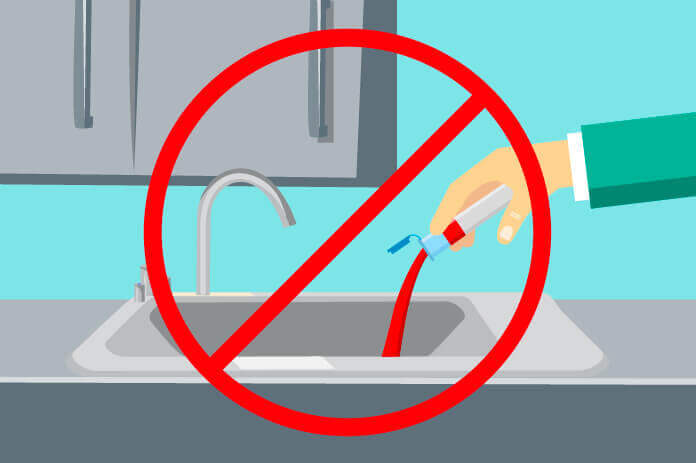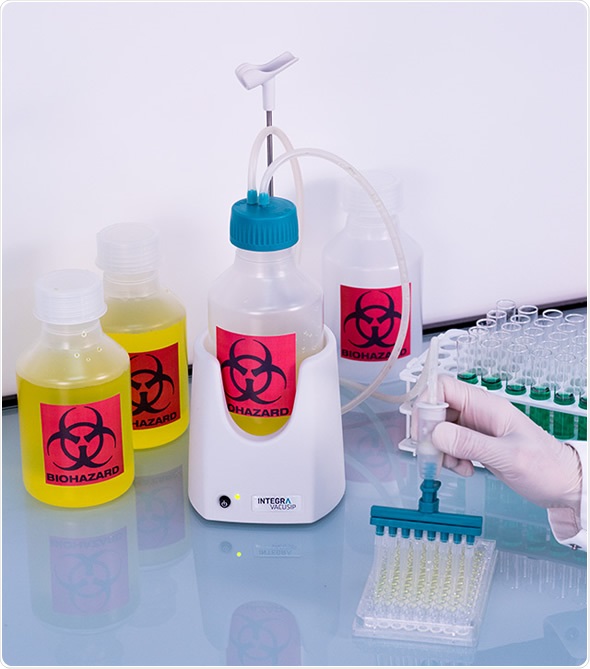Cutting-edge Industrial Wastewater Treatment Solutions: Shielding the Setting
Cutting-edge Industrial Wastewater Treatment Solutions: Shielding the Setting
Blog Article
Recognizing the Comprehensive Refine of Fluid Garbage Disposal: Ideal Practices and Environmental Impact Factors To Consider
The monitoring of fluid waste disposal is a diverse concern that calls for a detailed understanding of various best techniques and their connected ecological effects. From the kinds of fluid waste produced to the methods used for collection, therapy, and last disposal, each action plays an essential duty in guarding communities and public wellness.
Kinds of Liquid Waste
Recognizing the various kinds of liquid waste is vital for effective management and disposal techniques. Liquid waste can be broadly classified into a number of kinds, each needing special handling and treatment methods.
Industrial fluid waste usually contains unsafe materials, including hefty metals, solvents, and chemicals, produced during making processes. These wastes demand strict regulative compliance to secure human health and wellness and the setting. Domestic liquid waste mainly describes wastewater created from houses, including sewage and greywater, which, although much less hazardous, can still posture considerable risks if poorly taken care of.
Agricultural liquid waste, consisting of overflow from farms, frequently has plant foods and chemicals that can result in environmental destruction if not dealt with sufficiently. Medical fluid waste, generated from health care facilities, consists of polluted fluids such as bodily fluids and chemicals, needing specialized disposal techniques to avoid infection and environmental contamination.
Finally, oil and grease waste, usually generated by restaurants and vehicle markets, can trigger severe clogs in sewage system systems otherwise handled correctly. Recognizing these groups assists in targeted strategies for treatment, conformity with laws, and effective disposal methods, inevitably advertising environmental sustainability and public health safety.

Collection Methods
Effective collection techniques are important for the proper administration of fluid waste, making certain that it is collected securely and efficiently before therapy or disposal. Numerous methods are utilized depending on the type of liquid waste produced, the quantity, and the certain attributes of the waste.
One usual approach is making use of dedicated collection storage tanks or sumps, which are created to capture liquid waste at the source. These systems commonly include pumps that promote the transfer of waste to larger storage space containers or therapy facilities. Additionally, mobile collection devices furnished with vacuum cleaner technology are employed in circumstances where waste is produced periodically or in hard-to-reach locations.
For industrial settings, closed-loop systems can properly lessen spills and leakages, enabling the recuperation and reuse of liquid waste. It is likewise important to train workers on proper collection methods to alleviate risks connected with harmful compounds.
In addition, implementing routine maintenance routines for collection tools guarantees optimum efficiency and safety. The combination of advanced tracking systems can boost collection performance by giving real-time data on waste levels and possible dangers. In general, effective collection approaches are fundamental to lasting fluid waste management methods.
Treatment Processes
Therapy procedures play a crucial role in the monitoring of fluid waste, transforming possibly dangerous products into reusable resources or secure effluents - liquid waste disposal. These procedures can be extensively classified into physical, chemical, and biological approaches, each tailored to deal with details impurities present in the waste stream
Physical therapy methods, such as sedimentation and purification, work by eliminating put on hold solids and particle issue. These methods are commonly the initial step in the treatment chain, effectively reducing the tons on succeeding procedures. Chemical treatments entail using reagents to reduce the effects of hazardous substances, speed up hefty metals, or oxidize natural toxins, therefore improving the security of the effluent.
Biological therapy processes, consisting of activated sludge systems and anaerobic food digestion, capitalize on the all-natural capabilities of bacteria to degrade raw material. These techniques are specifically effective for wastewater having naturally degradable toxins. Advanced therapy modern technologies, such as membrane filtration and advanced oxidation processes, are progressively utilized to attain higher degrees of purification.
Including a combination of these treatment methods not just makes certain conformity with regulatory standards however also promotes ecological sustainability by recouping important sources from liquid waste.
Disposal Options
How can companies make certain the accountable and secure disposal of fluid waste? Effective disposal alternatives are crucial for securing public health and the setting. The main techniques consist of land disposal, incineration, and therapy adhered to by discharge right into local wastewater systems.
Land disposal involves the cautious control of liquid waste in marked landfills, making certain that it does not leach right into surrounding dirt or water. Incineration, on the other hand, topics fluid waste to heats, transforming it into ash and gases, which require correct purification to reduce discharges. This method appropriates for contaminateds materials that can not be treated with standard ways.
In instances where fluid waste can be treated, companies may go with organic or chemical treatment procedures to neutralize hazardous components before discharging the treated effluent right into metropolitan systems. This path generally straightens with regulatory demands, guaranteeing that the effluent satisfies safety and security criteria.
Inevitably, companies should carry out detailed assessments of each disposal choice to identify its feasibility, taking into consideration aspects such as waste make-up, regulative compliance, and potential threats to wellness and the atmosphere. By choosing ideal disposal approaches, services can add to an accountable waste administration technique.
Environmental Impact
The ecological influence of liquid garbage disposal is a vital consideration for companies looking for to lessen their ecological impact. Improper disposal approaches can bring about considerable contamination of water resources, soil destruction, and unfavorable impacts on neighborhood ecosystems. For example, harmful liquids can seep right into groundwater, posturing dangers to drinking industrial wastewater treatment water materials and marine life. Furthermore, the discharge of unattended or inadequately treated waste right into surface area waters can cause eutrophication, leading to oxygen exhaustion and the succeeding death of fish and various other organisms.

To minimize these effects, companies should adopt best practices such as applying rigorous waste therapy processes, promoting recycling and reuse, and adhering to governing criteria. By taking an aggressive technique to liquid waste monitoring, entities can significantly lower their environmental impact while supporting lasting growth objectives. Ultimately, a thorough understanding of the ecological influences linked with fluid garbage disposal is crucial for notified decision-making and accountable stewardship of natural deposits.
Final Thought
Efficient management of liquid waste is important for securing environmental integrity and public health and wellness. By taking on best methods in collection, therapy, and disposal, alongside adherence to regulatory standards, the possibility for hazardous contamination of communities can be significantly decreased. Constant innovations in technology and processes add to sustainable waste management initiatives. Eventually, a comprehensive understanding of liquid garbage disposal not just reduces ecological influences but likewise cultivates a dedication to liable source monitoring and environmental stewardship.
The management of fluid waste disposal is a complex problem that requires a thorough understanding of various ideal practices and their associated ecological impacts. From the kinds of liquid waste produced to the methods utilized for collection, treatment, and last disposal, each action plays a vital role in securing ecosystems and public health.The ecological effect of liquid waste disposal is a critical consideration for companies seeking to reduce their eco-friendly footprint. Ultimately, a comprehensive understanding of the ecological effects associated with liquid waste disposal is essential for educated decision-making and accountable stewardship of natural sources.
Ultimately, an extensive understanding of liquid waste disposal not just mitigates ecological influences but also promotes a dedication to liable source management and ecological stewardship.
Report this page